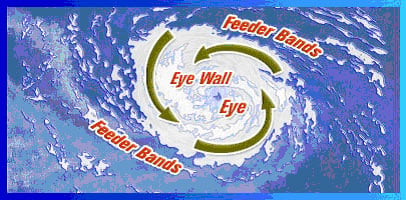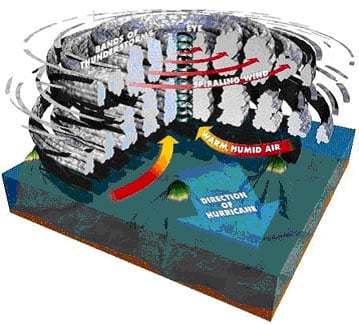
Hurricanes
In-Depth
Keep reading to find out…
What does it look like?
What makes a hurricane?
How do they determine the "category"?
How do they name the hurricane?
When will they stop?
What does it look like?
Click through the different parts of the images below. Each section will
pop-up a window of information.

What makes a hurricane?

- Ocean water temperatures of at least 80º Fahrenheit. This
provides the storm with heat energy it needs to grow. That's why hurricanes
in the Northern Hemisphere form in June through November, when ocean
temperatures are warmest. September 10 is the peak of the Atlantic Ocean's
hurricane season.
- Low wind shear from the top to the bottom of the atmosphere.
For example, if the winds at the oceans' surface are light, and winds
at high altitude over the tropical wave are strong, this "shear"
will act to tear the developing hurricane apart.
- Something to get the tropical wave spinning. This is usually
provided by a low-pressure system or front that moves from land
over the tropical ocean. The part of Earth's spin that points straight
up at the point of interest, called the Coriolis
force, must help get the storm spinning. Near the equator, the
Coriolis force is zero, so no hurricanes form within about 500 miles
of the equator.
Pages 1 • 2
|

